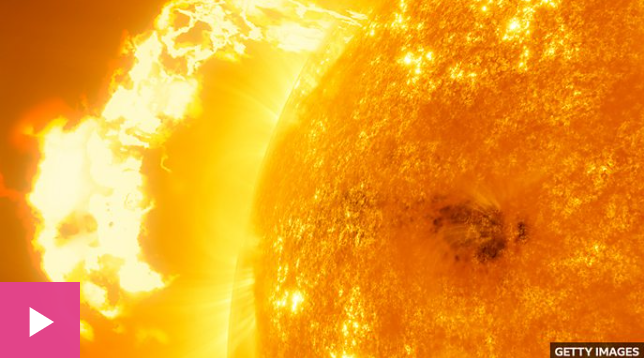本集内容
What is a ‘solar flare’?
什么是 “太阳耀斑”?
文字稿
Explosions on the Sun are the reason why we have the beautiful auroras and Northern Lights.
太阳上发生的爆发是我们能看到美丽的极光和北极光的原因。
But they can also send electromagnetic radiation that can affect technology and cause power cuts on Earth, and be harmful to astronauts in space.
但这些爆发也会释放出电磁辐射,这些辐射会影响地球上技术设备的运行并导致停电,还会伤害太空中宇航员的身体健康。
Known as ‘solar flares’, they can reach Earth in just over eight minutes, in what we call ‘space weather’ or ‘solar storms’.
这些爆发被称作 “太阳耀斑”,它们造成的影响可以在八分钟多一点的时间内抵达地球,这一现象被叫做 “空间天气” 或 “太阳风暴”。
In 2017, massive solar flares disrupted devices such as GPS navigation systems.
在2017年,大规模的太阳耀斑扰乱了诸如全球定位导航系统等设备的运行。
But why does this happen?
但是为什么会发生这种现象呢?
The magnetic field at the Sun’s North and South Poles switch places, a process called ‘solar cycle’ that takes about 11 years.
太阳南极和北极的磁场会发生对调,这个被称为 “太阳周期” 的变化过程需要大约 11 年完成一次。
The calm start of the cycle is called the ‘solar minimum’ – when the Sun has the least [number of] sunspots.
太阳周期的初始相对平静,被称为 “太阳极小期”,此时太阳上太阳黑子的数量最少。
But activity increases until peaks in the middle of the cycle, called ‘solar maximum’.
但太阳的活动会逐渐增加,直到在太阳周期的中间时达到顶峰,这一时期被称为 “太阳极大期”。
That’s when the Sun has the most [number of] sunspots, areas where huge explosions of light and energy take place.
太阳极大期时,太阳上的太阳黑子数量最多。太阳黑子是太阳上大幅爆发出光和能量的位置。
Agencies like Nasa announced the solar maximum period in 2024.
诸如美国国家航空航天局等部门曾发布 2024 年是太阳极大期的消息。
But scientists say space weather can also occur at other times.
但科学家表示,空间天气也可能在太阳极大期之外出现。
